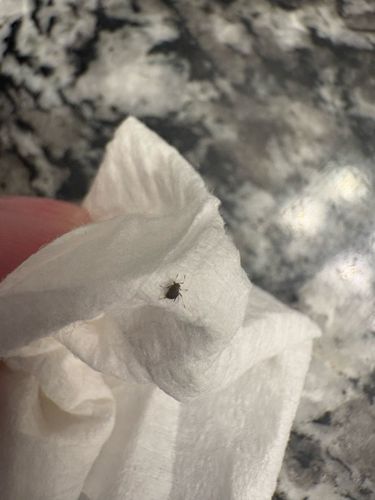Tick
Scientific Name: Ixodida
Order & Family: Acari (suborder), Ixodidae (hard ticks) or Argasidae (soft ticks)
Size: Unfed: 1-5 mm; Fed: up to 10-15 mm (depending on species and level of engorgement)

Natural Habitat
Wooded areas, tall grass, shrubs, leaf litter, and sometimes urban environments and homes, often seeking hosts (mammals, birds, reptiles, amphibians).
Diet & Feeding
Strictly hematophagous, meaning they feed exclusively on the blood of vertebrates (mammals, birds, reptiles, amphibians). They are obligate ectoparasites.
Behavior Patterns
Ticks undergo four life stages: egg, larva, nymph, and adult. Each active stage (larva, nymph, adult) requires a blood meal to progress to the next stage or to reproduce. They use a behavior called 'questing' to find hosts, climbing onto vegetation and waiting with their front legs outstretched to grab onto a passing animal or person. They are not insects but arachnids.
Risks & Benefits
Potential risks: Ticks are significant vectors of various pathogens, causing diseases such as Lyme disease, Rocky Mountain spotted fever, anaplasmosis, ehrlichiosis, and Powassan virus in humans and animals. Tick bites can also cause allergic reactions or tick paralysis in some individuals. Benefits: In certain ecosystems, ticks may serve as a food source for some predators, though this is often outweighed by their role as disease vectors.
Identified on: 10/19/2025